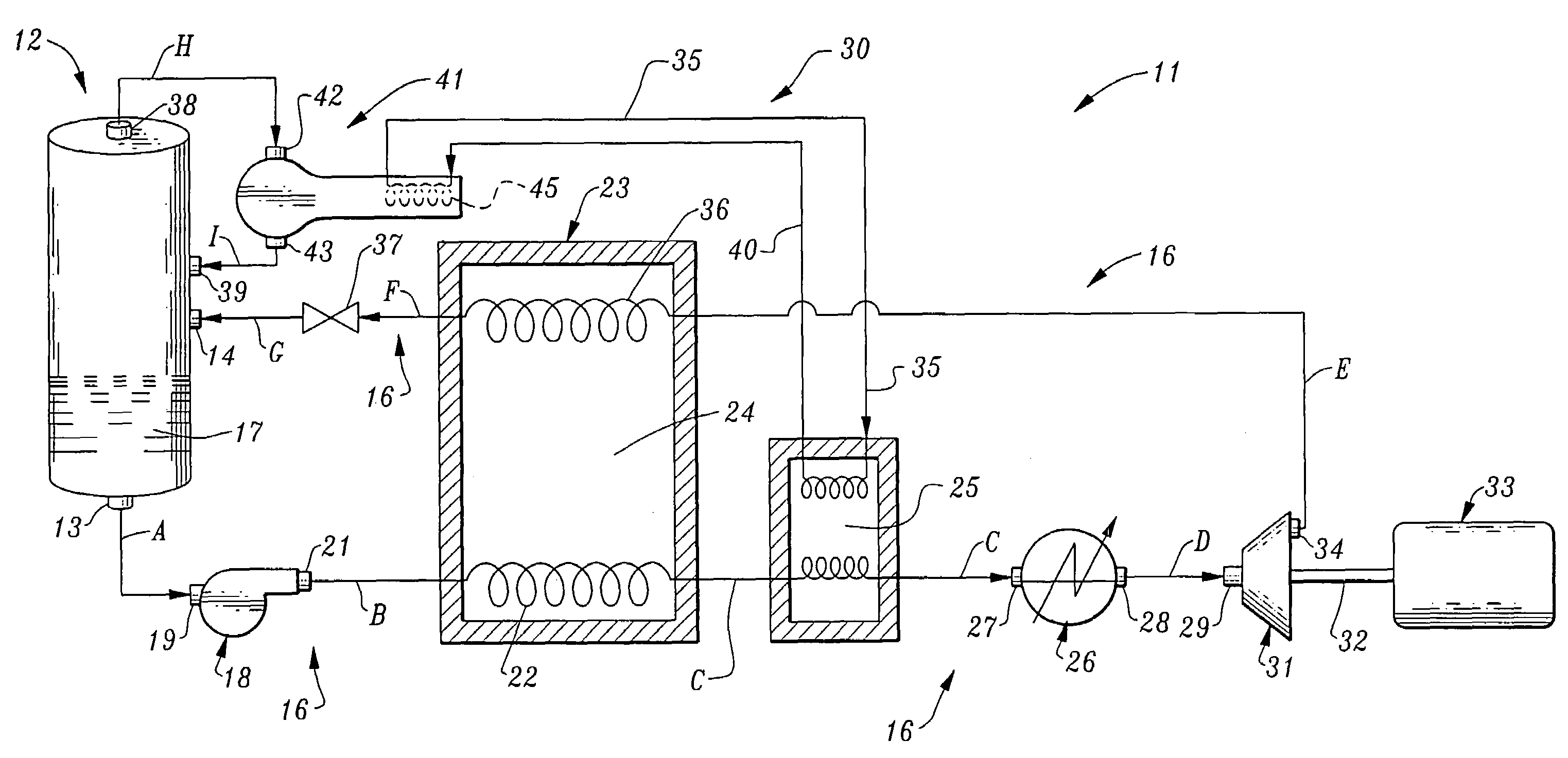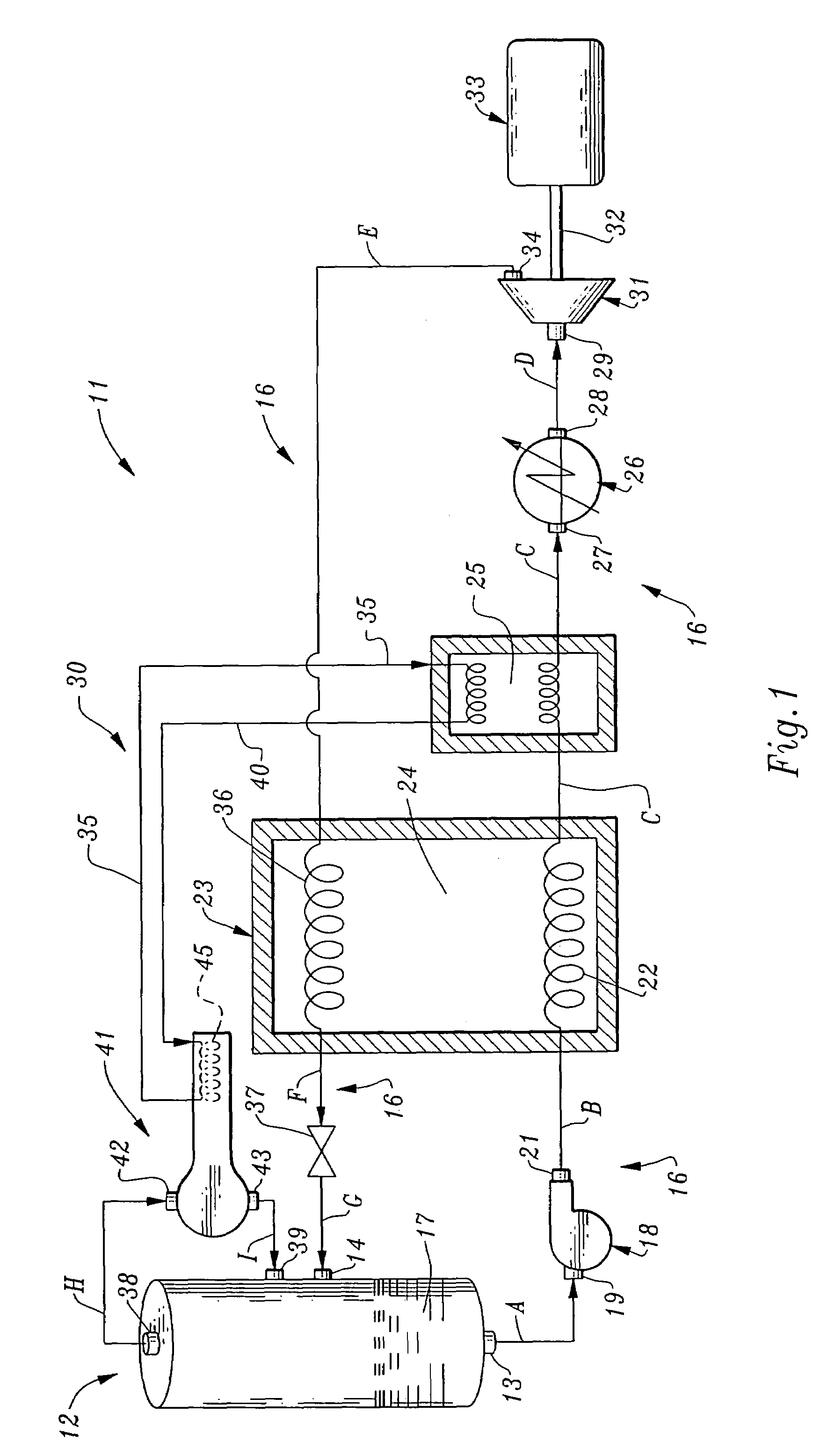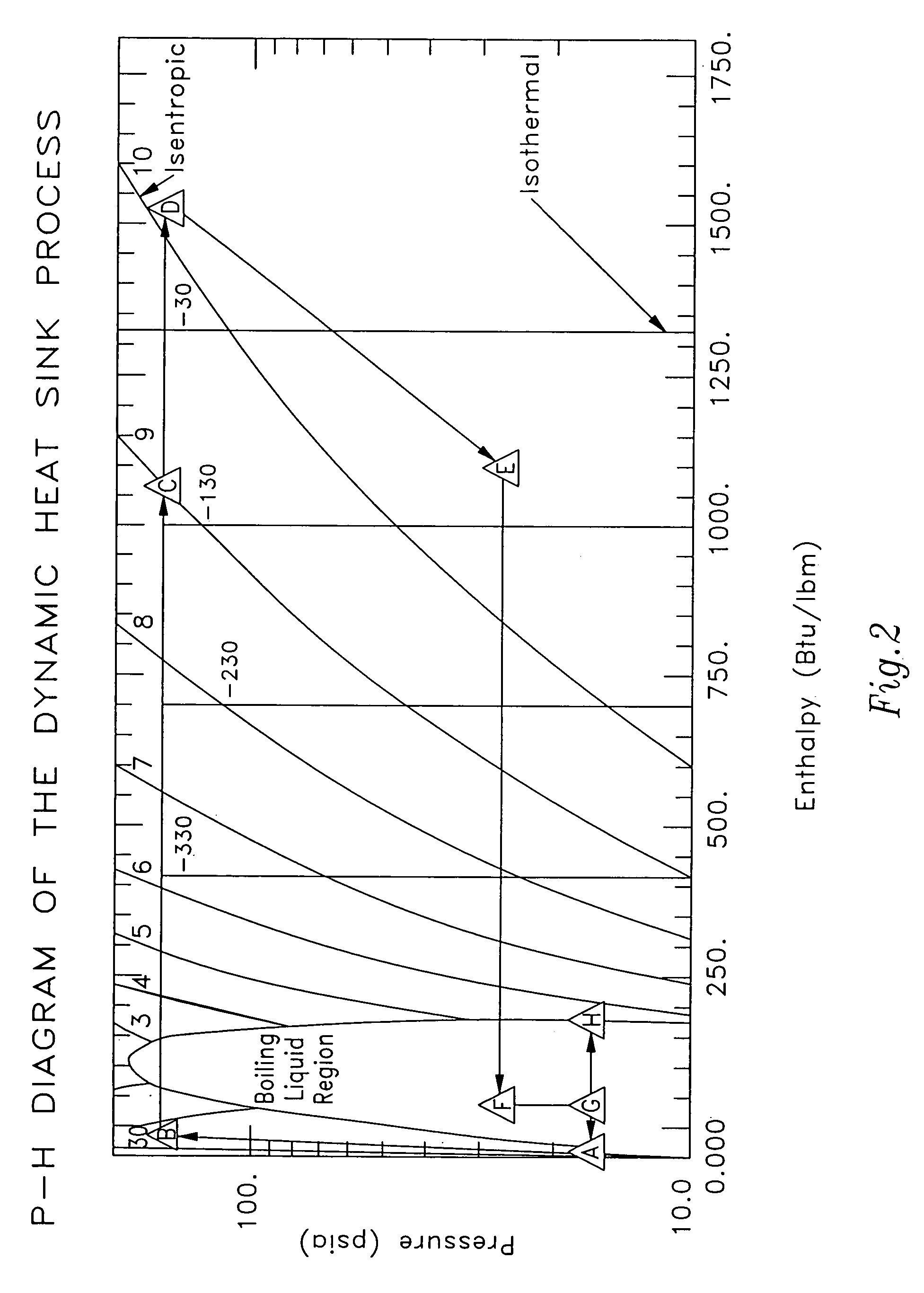Dynamic heat sink engine
a heat sink engine and dynamic technology, applied in the direction of machines/engines, mechanical equipment, electric generator control, etc., can solve the problem of sudden collapse of the tank pressure, and achieve the effect of reducing the heating duties of the heater, increasing the coefficient of performance of the liquefied, and being readily available and renewabl
- Summary
- Abstract
- Description
- Claims
- Application Information
AI Technical Summary
Benefits of technology
Problems solved by technology
Method used
Image
Examples
Embodiment Construction
[0019]Turning now to the drawings, and in particular to FIG. 1, the invention comprises a dynamic heat sink engine 11, including a storage vessel 12 having a working fluid outlet 13 and a working fluid inlet 14. A closed-loop, first working fluid circuit 16 extends between the working fluid outlet 13 and the working fluid inlet 14. A lower portion of storage vessel 12 contains an amount of cryogenic working fluid 17 in liquid form, which is maintained at or near its boiling point. Working fluid 17 is preferably hydrogen, as it is readily available and it is a renewable resource. Other fluids may also be used as the working fluid, such as liquid natural gas or helium.
[0020]The working fluid 17 in vessel 12 is preferably maintained approximately 3 to 5 psi above ambient pressure, to prevent contamination from atmospheric gas, such as wet air. Fluid 17 is also maintained below critical temperature and pressure, for apparent safety reasons. If it can be established as safe in an industr...
PUM
 Login to View More
Login to View More Abstract
Description
Claims
Application Information
 Login to View More
Login to View More - R&D
- Intellectual Property
- Life Sciences
- Materials
- Tech Scout
- Unparalleled Data Quality
- Higher Quality Content
- 60% Fewer Hallucinations
Browse by: Latest US Patents, China's latest patents, Technical Efficacy Thesaurus, Application Domain, Technology Topic, Popular Technical Reports.
© 2025 PatSnap. All rights reserved.Legal|Privacy policy|Modern Slavery Act Transparency Statement|Sitemap|About US| Contact US: help@patsnap.com



